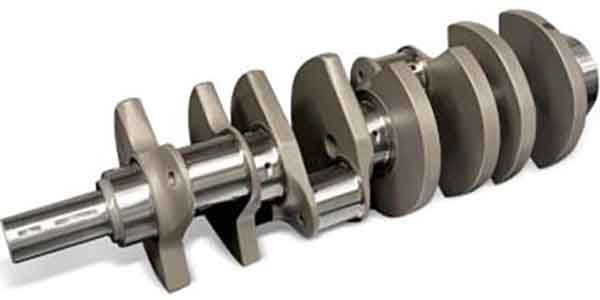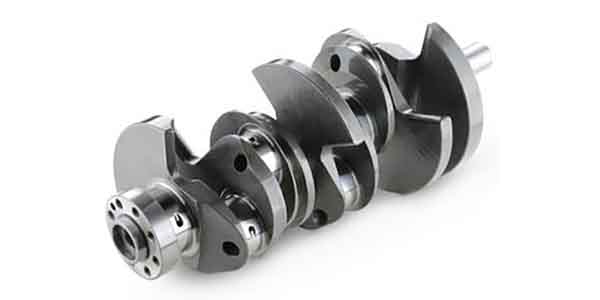As performance, technology and ultimately horsepower have continued to increase over the years, engine builders have needed to evolve along with it. That means being able to control increased horsepower to create livable and workable horsepower.
Obviously, pistons still go up and down and cranks go round and round, but the technology involved in the entire engine has allowed performance to reach new heights. All that increased horsepower has to go through the crankshaft – aka the heart of the engine. If that crank/heart is unhappy, everybody’s unhappy. Enter crankshaft balancing.
We caught up with Randy Neal of CWT Industries to understand what he’s been seeing in the industry when it comes to balancing techniques, trends, and simply right from wrong ideas. A good balance job can go a long way, but a poor one can destroy much more than just a crankshaft.
Why Offer Balancing?
If there’s anything all of us in this industry have come to understand, it’s that you can never be certain someone else did the job correctly, and that applies to the manufacturer level too. Double checking work is a must in all aspects of engine building. As such, when it comes to crankshafts and crank kits that you or a customer might purchase, it’s imperative to ensure a proper balance job was performed and not just trust that it was because it says so.
“The number one thing that we’re seeing is the end user is naive as to some of the incidental questions they should be asking when they’re ordering a crankshaft,” says Randy Neal of CWT. “If you’re buying a crank kit from multiple suppliers, the crank manufacturer will develop a crank for a known target bobweight. If someone is going to use lighter pistons and rods or heavier pistons and rods, unless the crank kit supplier is really able to control all of the related components, I can almost guarantee that the unit will not even be close to a balanced tolerance for the application. Unfortunately, we’re seeing a lot more of that all of a sudden.”
The end user buys these kits thinking everyone else has done their due diligence, only to find out they put it together and it has a little vibration. There is no such thing as a good vibration when it comes to crankshafts.
“I’ve seen information sheets come through that say the unit is balanced within plus or minus 2% of factory,” Neal says. “If you have a 2,000 gram bobweight, plus or minus 2% is 40 grams in either direction, or a cumulative error of 80 grams – that’s not balanced.”
Something Randy hopes shops will start doing is offering customers a free balance job on these crank kits, but only if they are indeed properly balanced. If not, you get to charge them to properly balance it, and the customer will be glad to have you do it either way.
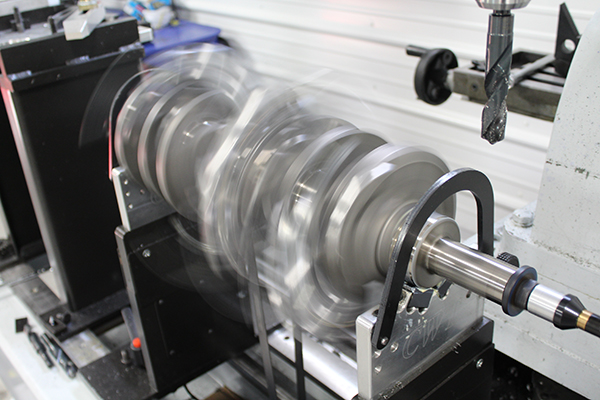
“When people talk to me about why they should get into balancing for their applications, I tell them that if the customer bought a crank kit, regardless of where it came from – eBay, Summit, JEGS, etc. – you should go to the client and ask if they’ll allow you to weigh the components, put a set of bobweights on it, spin it, and if it’s balanced, I won’t charge you a dime,” he says. “That’s a neat little challenge to put to the end user. They’re thinking, ‘Wow, I can get a free balance job out of this because they said it was balanced already.’ The truth of the matter is, I have never had a single client ever tell me that they were able to find any kit and it was balanced to the ISO standard. Not once. It’s a motivator for the guy who’s thinking about getting into the balancing business. Again, that’s the naivety of the end user. He’s going to lose the bet. He just doesn’t know that. It’s sort of like Las Vegas.”
A lot of shops market that they balance to within 1 gram, which is great. However, the ISO balancing specification is not always that tight of a tolerance, depending on several factors.
“The ISO balancing specification calls for the amount of mass or the cumulative weight of the piston, rod, crank, harmonic balancer, flexplate, torque converter, etc. – whatever the gross weight is,” he says. “It also wants to know how much peak rpm is going to be applied – 6,000, 7,000, 8,000, 10,000. Each rpm range has its own individual application. A lot of times, to balance within 1 gram is almost a form of entertainment.
“In other words, on a bone stock crank, you may only need to be within 5 grams. The reason – it doesn’t spin very much rpm and it’s a fairly light assembly. Each one of the balance tolerances are really a per application spec. Whether it’s racing, high performance street, grandma’s car, whatever – they all have different application tolerances. Anything below the standard generated by the ISO format is a form of entertainment. There’s no net benefit.
“When guys tell me they’re balancing to within 1 gram, I’m not against that. I just think, in some cases, there’s very little value. In order to achieve that tolerance, sometimes you’re just wasting time. Somebody will bark back at me over that, but numbers don’t lie.”
While this may be the case for certain lower-rpm applications, it does differ when you start talking about higher rpm and high-performance engines. Keeping those tighter tolerances becomes more important.
“A couple decades ago, OEMs such as General Motors, Ford and Chrysler had a generic balancing standard they called 2 oz. inch,” Neal explains. “Depending upon the mass weight, that could be anywhere in the neighborhood of 10 to 15 grams. OEMs were balancing everything to that standard. The reason was those engines were never intended to run high rpm. As engines picked up rpm, they had to move those tolerances back.
“Now, we’ve got to the point where grandma’s car, because of the lean conditions and the application of the engine, is balanced to tighter tolerances. OEMs went from 2 oz inch down to 0.16. That’s a pretty radical change. They were running somewhere around 15 grams. Now they’re down to under 2 grams, and in some cases, under 1 gram depending on how light the assembly is. That’s just for grandma’s car. It wasn’t so much because of performance. They were making more horsepower, but it’s because engines have gotten lighter. It takes less power to move lighter objects.”
In the old days, you could run an “excessive” amount of unbalance and it didn’t transfer to what we call the seat-of-the-pants feel. Now, with the lighter castings, the leanness, the electronic ignition/fuel relationship, it needs all the help it can get to minimize a false trigger to the electronics, so tolerances are tighter.
Under/Over Balancing
While the ISO standard should be adhered to, there is also a notion that over or underbalancing a crank has certain advantages. Whether you go over/under the standard 50% is a personal theory and guys have come up with different reasons for doing it.
In an overbalance, you imagine that the reciprocating mass is heavier than what it actually weighs. Anything over 50% is considered an overbalance, and Neal says he’s seen as much as 56%. Jon Kaase has said he uses a slight percentage increase over 50% for really big cubic inch motors, and NASCAR Cup guys overbalance to 51%-52%.
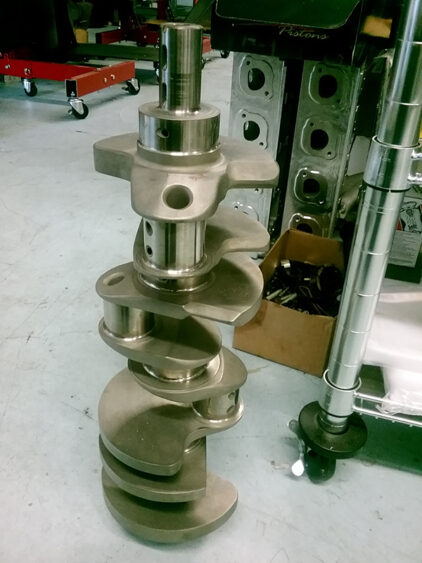
On the flip side, anything under 50% is underbalancing. Reher-Morrison, which builds mountain motors, came out and said they underbalance, and Pat Musi Racing Engines, which builds 900-plus cubic inch engines, also does this.
“The guys at Reher-Morrison told me they underbalance to 47%,” Neal says. “This bothered me, so I flew down to the shop to see the crank and they were running 47% because they didn’t have enough real estate to put any more mallory in. I told them, you’re doing this because you just can’t get there [to 50%].
“The guys at Pat Musi’s shop were underbalancing to 47% as well. They told me it was the only way they could really make the engine run. I asked what kind of bearing clearance they were running, and in some cases, it was .007” or .008”. That is a lot. But, Pat’s engines don’t stay out very long before you send them back for a freshen up.
“I like to look at bearings, and the reason is, if that bearing is not happy, nothing’s happy. The drag racing application is one thing, but in endurance racing or road racing, that’s when bearings really tell the story. The problem with bearings that are unhappy is they don’t have a way of recovering once they’re injured.
“As you open clearance in a bearing, you in turn are allowing it to escape load. The oil pump has to work a lot harder, and that’s parasitic drag. Because mountain motors are making such a massive amount of power and they’re such a short-duty cycle, I don’t think they fully understand the durability of the bearing is always going to be in question.”
In Randy’s experience, he’s had people slightly overbalance without seeing signs of immanent bearing failure. By the same token, going the other way with an underbalance, you better be ready to freshen that engine frequently due to bearing wear.
“Aside from a good balance job, you have to have the geometry correct, the clearances right, the coatings right, and the materials right,” Neal says. “If you’re at 50%, you’re good. Anything else is an unqualified adjustment. People who over or underbalance might tell you they win races, but that’s not a benchmark. It is, however, a belief, and sometimes engine builders have some rather unique beliefs. When you really start studying it and look at the bearing, it’s all telling.
“The number one failure is typically lack of oil, followed by foreign debris. If you read a bearing and you see the very edge of it has witness marks of contact, it’s testifying to you that there’s flexure. Balancing won’t fix that. The problem is deflection, which means the load has exceeded the crank’s ability to maintain geometry.”
Harmonic balancers have become an important component for improving crankshaft performance and ultimately creating cumulative harmony within the engine.
Removing/Adding Weight
In an effort to balance a crankshaft, you often have to add or remove weight to one side or the other to eliminate any possibility of vibrations occurring in the engine. One thing Randy says he’s been seeing more of when removing weight is a move toward no-hole balancing.
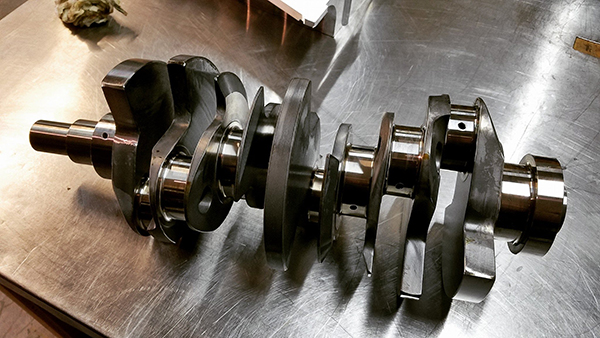
“When we’re typically lightening the crank, we’re drilling,” Neal points out. “People totally misunderstand what’s going on there. We start drilling on that counterweight to make it balanced in the first order, but what we’ve done is we’ve weakened the counterweight. What happens is it will start to flutter. It goes into what’s called hysteresis – similar to waving your hand. As that counterweight is doing that, the rest of the crank starts to respond to that. In fact, the entire engine from wing nut to oil pan responds to that.
“At 3,000 rpm, who gives a rats ass? But, as we go faster with more load and more torque, all of a sudden that counterweight has a critical application. Instead of drilling on the crank, we calculate the amount of mass that has to come off and use a lathe cutting program to minimize weight, but it does not hurt the counterweight structurally. Because it’s uniform and doesn’t have a series of perforations, like drilling holes in it would create, it has a better chance to stay stable.”
Speaking of stability, another trend within balancing is the idea of bolt-on counterweights. According to Randy, this idea comes from heavy-duty diesel, but it has advantages in racing applications.
“We’re going to start seeing more and more tendency to have bolt-on tungsten counterweights, and we are already seeing it in racing,” he says. “There are two advantages to that – one is it minimizes the circumference, which helps the engine accelerate and decelerate faster, but secondly, because it’s a different alloy, the frequency is different than the base steel of the crank, so it adds a dampening quality. This is only seen at the high end of racing right now.
“Even steel bolt-on weights is a trend, and we’re doing work right now with a couple of the crank manufacturers. I’ve been preaching this for over a decade, but now everybody’s starting to see maybe there is something to this. We’d like to see evolution of the bolt-on weights.”
Much like adding bolt-on weights to the crank, balancing a crankshaft often times involves adding tungsten slugs, known as mallory, to get within the proper tolerances. However, this is a practice often done incorrectly, and when done incorrectly, can have serious adverse effects.
“Typically, we drill into the crank from a radial inward,” Neal points out. “Some people have drilled in that direction and then set mallory/tungsten into that hole, and then they weld on top of it to get it to stay there. That’s an incredibly suicidal process. The weld is an inappropriate activity because the density of the tungsten is 2x-plus over steel. That’s the advantage of density for correcting mass, but the two metals are alien to each other. In other words, there’s different expansion and contraction rates.
“Guys weld these pieces in because it was a loose fit. It’s supposed to have a press fit minimum and that’s dependent upon diameter. For generic conversation, we’ll say it’s about .002” press fit. They’ll drill and ream for say a 1” bore, but the tungsten should be something like 1.002”. Well, that gives you a .002” interference fit, but because many of the light-duty drills on balancing machines out there have such bad integrity, the hole is already bigger than 1.002”.
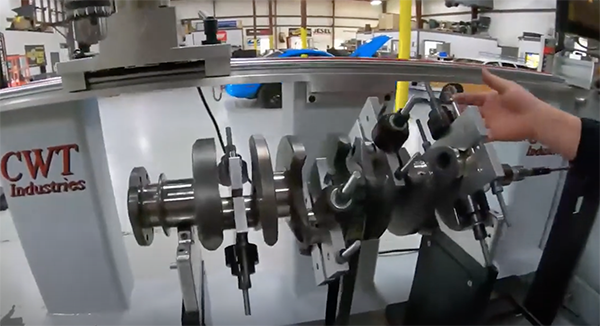
“Guys will slip metal in there, and then they will put a weld on one side, sometimes both sides, to get it to stay there. Well, if guys would just sit there after running that weld and study it, they’re going to find a hairline crack right between the weld, the base material and the tungsten. That’s caused by the differential of material expansion and contraction. I’m very much against that. A lot of guys have done it for years, and a lot of people have been “successful” without having it exit, but I do believe that’s only because they go to church a lot. It’s a poor practice and it should be stopped.”
It should also go without saying that a counterweight should never be drilled on the outer edge for a slug of tungsten to be pressed into. The key to adding metal is to ensure you have the proper press fit horizontally in the counterweight.
“Geometry is king,” Neal says. “Your material mismatch is not the problem when it’s pressed in. The interference fit between the tungsten/mallory and the counterweight – cast or steel – is really quite adequate to capture and hold that metal if it’s put in sideways or through the side of the counterweight.”
Something else you don’t want to do is put those metal slugs too close together or too close to the radial arc of the counterweight. If you do that, it might live for X number of runs, but eventually it will surrender to centrifugal load force and extrude from the crank. That happens because of not having enough material support both radially or between each slug.
“There is an awful lot of advantages to running tungsten to adequately meet the criteria for the rotating weight mass, but there’s only one correct procedure,” Neal admits. “It’s making sure you have the right press fit and then enough material there to keep it in there. When it comes to balancing, guys need to have common sense and follow safety.” EB











